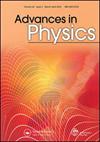Spin-polarised currents and magnetic domain walls
IF 13.8
1区 物理与天体物理
Q1 PHYSICS, CONDENSED MATTER
引用次数: 174
Abstract
Electrical currents flowing in ferromagnetic materials are spin-polarised as a result of the spin-dependent band structure. When the spatial direction of the polarisation changes, in a domain structure, the electrons must somehow accommodate the necessary change in direction of their spin angular momentum as they pass through the wall. Reflection, scattering, or a transfer of angular momentum onto the lattice are all possible outcomes, depending on the circumstances. This gives rise to a variety of different physical effects, most importantly a contribution to the electrical resistance caused by the wall, and a motion of the wall driven by the spin-polarised current. Historical and recent research on these topics is reviewed. Contents PAGE 1. Introduction 586 2. Spin-polarised current 587 2.1. Tunnelling current spin polarisation 589 2.2. Ballistic current spin polarisation 592 2.3. Diffusive current spin polarisation 593 3. Magnetic Domain Walls 598 3.1. Basics of domain walls 598 3.1.1. Domain wall thickness and energy 601 3.1.2. Micromagnetic calculations 603 3.1.3. Tailoring domain structures for measurements 605 3.2. Domain walls in nanostructures 609 3.3. Domain wall dynamics 610 4. Domain Wall Resistance 613 4.1. Early results 613 4.2. Theory 615 4.3. Recent experimental results 626 4.3.1. Homogeneous materials 626 4.3.2. Heterostructures 631 4.3.3. Mesoscopic devices 635 4.4. Huge domain wall MR in nanoconstrictions? 644 4.4.1. First results 645 4.4.2. Theoretical interpretation 650 4.4.3. Experimental exploration 656 5. Current-induced Domain Wall Motion 665 5.1. Experimental results 666 5.2. Theory 678 6. Conclusion 690 Acknowledgements 692 References 692自旋极化电流和磁畴壁
铁磁材料中的电流由于具有自旋相关的能带结构而发生自旋极化。当极化的空间方向发生变化时,在畴结构中,当电子穿过壁时,它们必须以某种方式适应其自旋角动量方向的必要变化。根据具体情况,反射、散射或角动量向晶格的转移都是可能的结果。这引起了各种不同的物理效应,最重要的是对由壁引起的电阻的贡献,以及由自旋极化电流驱动的壁的运动。回顾了这些主题的历史和最新研究。第1页。2.引言自旋极化电流587 2.1。隧道电流自旋极化589 2.2。弹道电流自旋极化592 2.3。扩散电流自旋极化593。磁畴壁598域墙的基础知识598 3.1.1。畴壁厚度和能量601 3.1.2。微磁计算603 3.1.3。裁剪域结构测量605 3.2。纳米结构中的畴壁[j];域壁动力学610Domain Wall Resistance 613早期结果613 4.2。理论615最近的实验结果626 4.3.1。均匀材料626 4.3.2。4.3.3.异质结构介观装置635纳米缩窄中的巨大畴壁MR ?4.4.1 644。第一个结果645 4.4.2。理论解释650 4.4.3。实验探索656电流感应畴壁运动665实验结果666 5.2。理论678结论致谢参考文献
本文章由计算机程序翻译,如有差异,请以英文原文为准。
求助全文
约1分钟内获得全文
求助全文
来源期刊

Advances in Physics
物理-物理:凝聚态物理
CiteScore
67.60
自引率
0.00%
发文量
1
期刊介绍:
Advances in Physics publishes authoritative critical reviews by experts on topics of interest and importance to condensed matter physicists. It is intended for motivated readers with a basic knowledge of the journal’s field and aims to draw out the salient points of a reviewed subject from the perspective of the author. The journal''s scope includes condensed matter physics and statistical mechanics: broadly defined to include the overlap with quantum information, cold atoms, soft matter physics and biophysics. Readership: Physicists, materials scientists and physical chemists in universities, industry and research institutes.
 求助内容:
求助内容: 应助结果提醒方式:
应助结果提醒方式:


